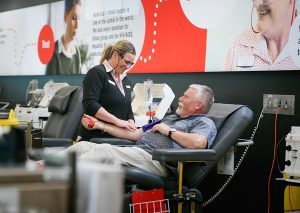 A blood donor safety initiative to encourage water loading before donation and applied muscle tension during the procedure appears to reduce the risk of vasovagal reactions in donors.
A blood donor safety initiative to encourage water loading before donation and applied muscle tension during the procedure appears to reduce the risk of vasovagal reactions in donors.
A comparison study, before and after the 2018 national roll-out of the Australian Red Cross Lifeblood donor safety initiative, found an 8% reduction in vasovagal reactions such as feeling lightheaded or nausea.
The study compared outcomes from 167,056 donations before and 215,572 donations after the 2018 introduction of the water loading and applied muscle tension advice across 97 fixed and mobile donor centres.
The water loading intervention involved donors being instructed to drink 500 ml water within 30 minutes of donation. For applied muscle tension, donors were asked to tense their leg and abdominal muscles on needle insertion and withdrawal and when getting up from the donation chair.
The study, published in Transfusion, found the rate of vasovagal reactions dropped significantly from 22.5/1,000 donations before the intervention to 20.6/1,000 donations after the intervention (p<0.001).
“Further, the total rate of presyncopal reactions decreased from 20.7 per 1000 donations to 18.9 per 1000 donations, a 9% reduction in presyncopal reaction rate (p < 0.001),” the study said.
The reduction was seen in both repeat donors and first time donors who are considered to be at higher risk of vasovagal reactions.
There was no significant difference in syncope reactions between the two donation periods in either donor group.
While donors were provided with written instructions and illustrations regarding the interventions, the investigators noted that they were unable to assess donor compliance.
However their findings of a reduction in vasovagal reactions were consistent with other studies.
“Ensuring all whole blood donors comply with applied muscle tension and water loading should be a priority for any blood collection agency aiming to improve donor safety,” they concluded.